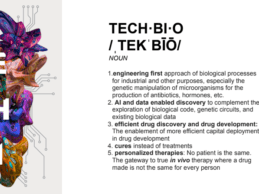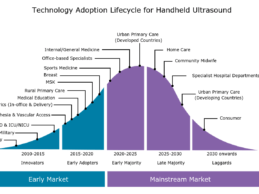When it comes to healthcare, we look to physicians, nurses, and specialists and trust them to be the experts when it comes to our health, but we don’t typically look to them to be technology experts. In fact, the healthcare industry, especially the back office, has been historically slow to adopt new technology, relying on paper records and pagers, fax machines and even hand delivery of files and records. Many clinics are not equipped to digitally connect to another office’s patient records.
Read More
Physician Practices Strategy to Developing A Strong Chronic Care Management (CCM) Program
More than three years have passed since the Centers for Medicare & Medicaid Services (CMS) introduced its separately billable non-face-to-face Chronic Care Management (CCM) service. This was intended to help more than two-thirds of individuals on Medicare who suffer from multiple conditions receive more coordinated, regular primary care. The hope was that a focus on managing chronic conditions would contribute to better outcomes for overall population health, improve individual access to
Read More
7 Trends Accelerating “TechBio” – The Life Sciences and Computer Sciences Convergence
We are now living in what I’m calling the
TechBio revolution. That’s not a typo that should read BioTech, but rather a
new way of looking at the convergence of technology and biology.
TechBio is defined as an engineering-first approach of biological processes for industrial, and other purposes, especially the genetic manipulation of microorganisms for the production of antibiotics, hormones, and so on. A process that uses AI and data-enabled discovery to complement the exploration of
Read More
Why The Handheld Ultrasound Market Is Poised for Next Wave of Growth
This year marks the tenth anniversary of the launch of the first handheld ultrasound scanner, GE Healthcare’s Vscan, yet the market has largely failed to live up to expectations. In 2018, sales of handheld ultrasound accounted for less than 2% of the $6.9 billion global markets for ultrasound equipment. The relatively high cost and limited performance of early generation handhelds were limiting factors. Steady product improvements over the years, coupled with fresh innovation from new market
Read More
Digital Twin Technology: Should Healthcare Jump on the Bandwagon?
While healthcare is known for not jumping to conclusions very fast when investing in new technology, the industry starts to pick up the pace. Such “newcomers” as blockchain, IoT, VR, and AR get a well-deserved appraisal and become an integral part of next-gen custom healthcare software aimed at supporting personalized treatment and predictable patient outcomes across a wide range of conditions.
We anticipate that the digital twin technology has good chances to become the next addition to the
Read More
Why 2018 May Have Been A High-Water Mark for Digital Health Funding
Notwithstanding the quite significant stock market turmoil for publicly traded healthcare companies in recent months, the level of private investment activity continued to be quite strong this past quarter. According to Rock Health, 1Q19 registered just under $1.0 billion of investments made in 61 healthcare technology companies, which while below the trailing two year quarterly average of $1.4 billion, still suggests an annual investment pace running toward $4.0 billion. StartUp Health, which
Read More
Healthcare BPO: Assessing Your Outsourcing Services Maturity
In the healthcare market, there is increasing demand for outsourcing services that can bring strategic insights, optimization, and efficiencies to critical operations, particularly among health plans.These partnerships speak to the dramatic shifts in how health plans are sold and purchased today, but also to the maturity of the healthcare business process outsourcing (BPO) industry itself.Years ago, BPO was more tactical than strategic—lifting and shifting units or processes to a far-flung
Read More
What The Failure of Microsoft’s HealthVault Means for the Future of EHRs
Microsoft recently announced that it is officially shutting down HealthVault at the end of this year. HealthVault was Microsoft’s attempt at a web-based personal health record system. You probably never used it -- it suffered low adoption. But while HealthVault will shut down, mobile apps that collect and store your personal health information and share it with your healthcare team are poised to revolutionize medicine and wellness practice.
The downfalls of HealthVault included its focus on
Read More
4 Major In-Home Healthcare Market Drivers to Watch
We are seeing a perfect storm in the making in healthcare with trends that have combined to form tailwinds that are now poised to drive massive expansion in the home healthcare market.
Even in the fast-growing healthcare sector, the home health industry stands out for its explosive growth. Home health spending is expected increase at a faster rate through 2027 than all other categories of care, according to a recent analysis from the Centers for Medicare & Medicaid Services (CMS) Office
Read More
How Can Health System Command Centers Reduce Cost Growth?
Scott Newton, DNP, RN, MHA, EMT-P, VP of Care Model Solutions at Teletracking In our decentralized care landscape, health system command centers (HSCC) are coordinating high-quality care through complex and integrated delivery networks (IDN). Recently, command centers were recognized by KLAS and Gartner as a new model of care delivery with the potential to impact clinical, financial, and operational outcomes. That means in addition to improving routine health system operations—and increasing
Read More










